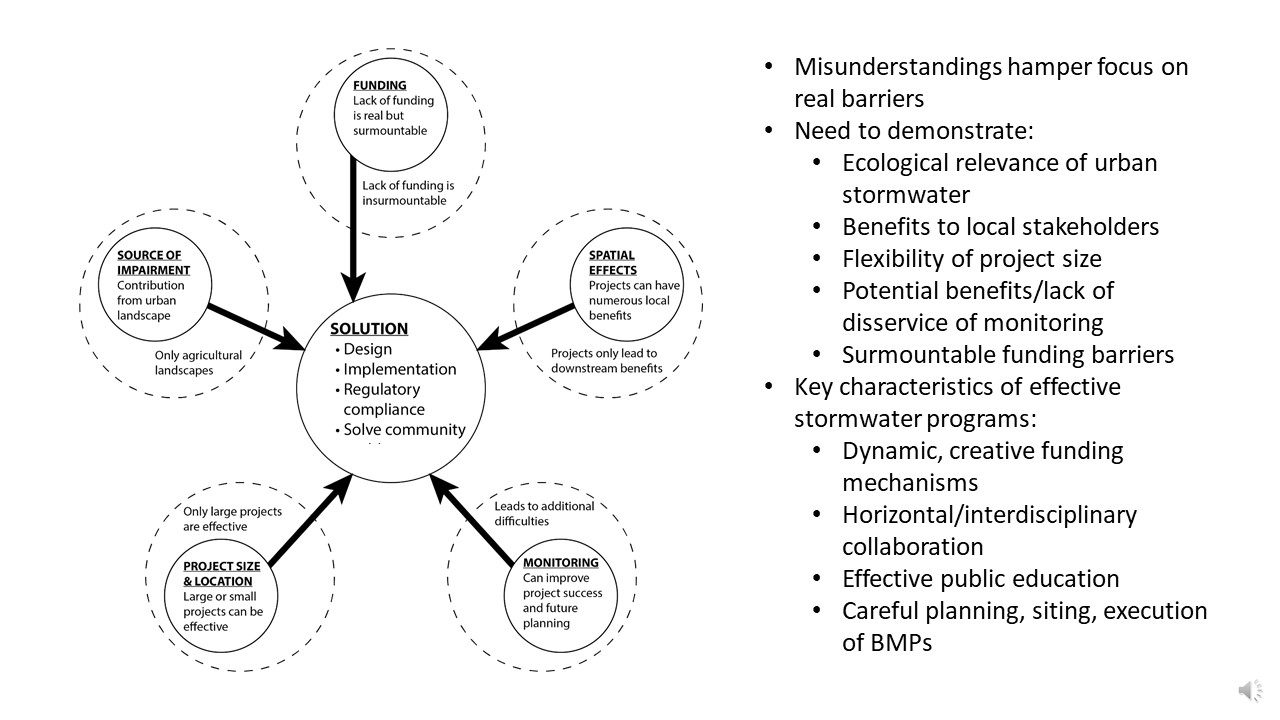Author:
Leslie Rieck
Co-Authors:
Craig Carson, Robert J. Hawley, Madison Heller, Mike Paul, Mateo Scoggins, Robert F. Smith, Mel Zimmerman
Institution:
Lycoming College
Abstract
Federal regulations for municipal separate storm sewers (MS4) in the United States have been in place since 1990 as part of the Nation Pollutant Discharge Elimination System (NPDES), aiming to reduce sediment and pollutant loads originating from urban areas. However, small-municipality MS4 permittees frequently face several common challenges, barriers, and misunderstandings in their efforts to regulate stormwater. We summarize common challenges and misunderstandings concerning MS4 management and offer real-world examples of effective approaches for satisfying MS4 requirements. For example, many municipalities see no funding mechanism for implementing stormwater plans, and small municipalities are at a particular disadvantage in the absence of direct federal or state funding. Taxes are a potential mechanism yet often unpalatable to local municipalities. Grants or the creation of a stormwater utility can offset costs to local communities but also face barriers to implementation. Additionally, best management practices (BMPs) can improve stormwater quality but benefits to the local community from improved water quality are often poorly understood or mischaracterized. In spite of this, there are several MS4 management approaches that may be more approachable, including forming coalitions, forming stormwater utilities, and establishing monitoring programs. Small municipalities can benefit greatly from a realistic, facts-based clarification of MS4 policies and practices that lays out all of the options available to achieve NPDES requirements.
